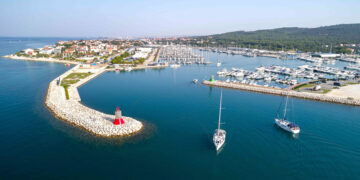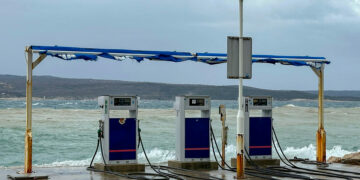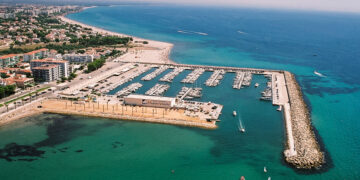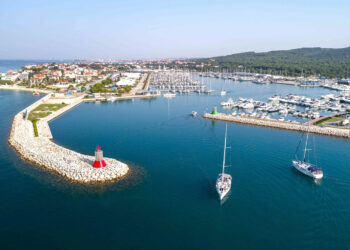With effect from 1 October 2020, the RKI has announced that the counties of Sibenik-Knin and Zadar are no longer counted among the Croatian risk areas. Website of the RKI
Travel warnings for individual countries as for example Croatia, Slovenia or Austria seem to be both from German and from Austrian view a book with the much-cited seven seals. Even if the defaults in the regulations sound clear and understandable, the regulation giver always left itself a back door open, with which deviating decisions can be justified.
Seven-day incidences under 50
So also with the partial German travel warnings for some Croatian regions. If the seven-day incidence is above the threshold value of 50, a travel warning is quickly at hand. However, if they fall below the limit, one hopes in vain for an equally rapid withdrawal of the travel warning.
Federal Foreign Office waits for “stable trends”
The SeaHelp editorship made the German Foreign Office attentive to the situation in the Gespanschaften Sibenik Knin, Zadar and Dubrovnik Neretva, the official reason for the maintenance of the travel warning reads, one must first wait for so-called “stable trends”, a not more near defined factual condition, which grants a rather large discretionary scope to the legislator.
Travel warning politically motivated?
Since here obviously rather political reasons give the decisive factor and not only the official numbers, in the long run only the normal common sense remains for travelers: If – for whatever reason – the politically responsible persons do not react, there is still the possibility to decide independently. And there it is from German view with consideration of the infection numbers more dangerously to visit Hotspots such as Hamm than something a vacation in Zadar or Sibenik to tackle.
Travel warning no travel ban
Those who internalize that the German Foreign Office on its homepage explicitly states that a travel warning is after all not a travel ban, may make their own judgement in view of the current figures for the respective Croatian regions.
Here the request to the German Foreign Office in the wording:
The official Croatian figures for the 7-day incidence for the Croatian counties of Sibenik-Knin (28.0), Zadar (30.3) and Dubrovnik-Neretva (37.9) are well below the limit of 50. According to the guidelines according to which these regions are declared risk areas, the travel warning for these areas of Croatia would now have to be lifted. I ask for notification when the downgrading of the affected areas can be expected. If the travel warning is not lifted in a timely manner, please inform me of the reasons for the downgrading.
Numerous German citizens own real estate in the affected regions, own a yacht that is stationed in one of the numerous marinas or have simply planned another charter vacation. They need legal security regarding the possible stay in an EU state. Please communicate to me at short notice, how you estimate the situation and when a withdrawal of the decision over risk areas in Croatia is to be counted on, if the numbers again clearly, in a case nearly around half, sank sank.
Here the link to the official figures (7-day incidences) of the counties of Croatia:
https://www.hzjz.hr/ravnateljstvo/broj-oboljelih-od-covid-19-i-stope-po-zupanijama/
Answer of the German Foreign Office:
The classification as a risk area and a travel warning can be revoked if the seven-day incidence in the country or individual regions concerned stabilizes below the threshold; the decisive factors here are reliable trends, not snapshots. Stable trends are important in order to avoid even short-term fluctuations of risk areas / travel warnings. There is no general commitment to a certain number of days, but as a rule, the development over at least one week is used for the risk assessment.
Further information:
[ulc id=”24261″ taxs=”470;473″ posts_per_page=”-1″ order_by=”title” order=”ASC” cols=”2″ layout_style=”minimal”]













